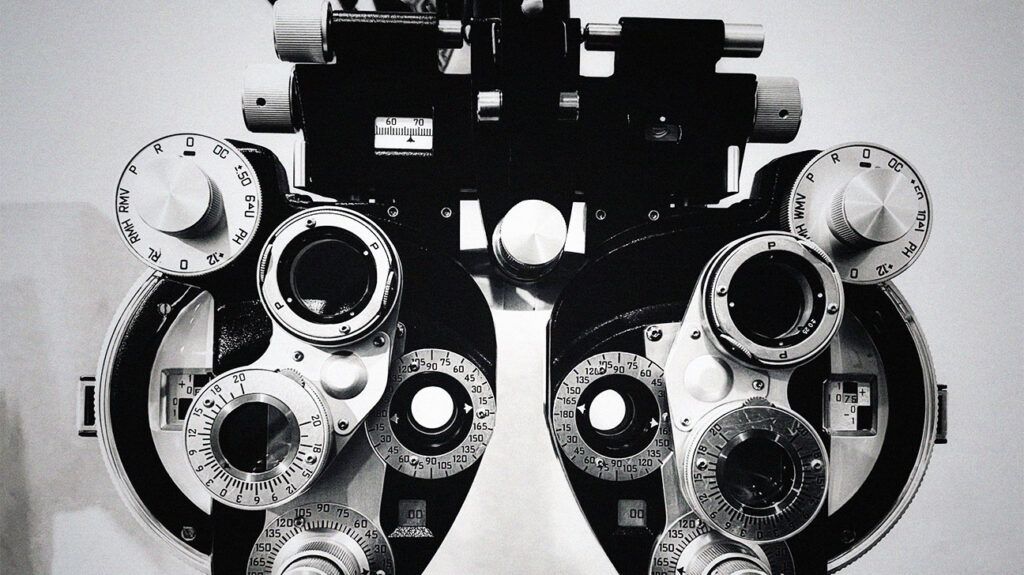Depending on the type of glaucoma, people typically have no symptoms in the early stages. However, once damage occurs to the optic nerve, people may notice blind spots, particularly in their peripheral vision.
Regular eye exams are important for detecting eye pressure changes and prompting early treatment to halt or slow damage and disease progression.
This article discusses the early symptoms of glaucoma, how doctors diagnose it, and how to prevent it from worsening.

Health professionals often call glaucoma the “silent thief of sight” because nearly half of those with the condition do not realize they have it until it progresses to later stages.
The two main types of glaucoma cause different symptoms. However, neither type causes symptoms in their early stages.
Open-angle glaucoma
Open-angle glaucoma is the most common form, affecting approximately
People with open-angle glaucoma do not have pain and vision problems at first.
As the disease progresses, they may notice blind spots, especially in their peripheral vision.
Angle-closure glaucoma
Angle-closure glaucoma, also known as closed-angle glaucoma or narrow-angle glaucoma, is a medical emergency. It occurs when the iris, which is the colored part of the eye, blocks the drainage area.
Angle-closure glaucoma can happen quickly and cause blindness in a
Symptoms of angle-closure glaucoma include:
- sudden blurry vision
- severe eye pain
- headache
- feeling nauseous
- throwing up
- seeing halos or rainbow-colored rings around lights
Sometimes, angle-closure glaucoma can progress slowly, causing no symptoms initially. Health professionals call this chronic angle-closure glaucoma.
The eye constantly makes new aqueous humor — the liquid inside the eye — and drains the old liquid through the drainage angle. Glaucoma occurs when the fluid drains too slowly from the eye, causing a buildup of fluid and increased pressure.
Doctors have several ways of staging glaucoma. Each staging system tests different aspects of the eye and disease progression. However, there is no gold standard staging tool for glaucoma.
Here is a general overview of the differences between the early and late stages.
Early stages of glaucoma
In the early stages of glaucoma, the drainage angle starts not working properly and may not let much fluid flow through. As the eye continues to make new aqueous humor, the pressure in the eye starts to rise.
Over time, the increase in pressure can start to damage the fibers of the optic nerve. However, until there is substantial damage, a person may not have symptoms.
Late stages of glaucoma
In the late stages of glaucoma, when most of the optic nerve is damaged, people start to notice blind spots in their vision. The most common area of blind spots is in the peripheral vision.
Peripheral vision is the outer edges of the field of vision. It allows a person to detect movement and see objects and activities they are not looking at directly.
Other symptoms of glaucoma in the late stages include having halos or blurry vision after being physically active.
Read more about glaucoma and peripheral vision.
Doctors may sometimes refer to an individual as a “glaucoma suspect.” This means the person has certain risk factors, such as increased eye pressure or changes to the optic nerve, yet shows no signs of damage. This status indicates that the person may not have glaucoma but is at high risk of developing the condition.
These individuals require close monitoring and regular eye exams. Early intervention can significantly slow the progression of the condition and resulting damage.
Common risk factors for glaucoma include:
- being over 40 years old
- having a family history of glaucoma
- having high eye pressure
- having farsightedness or nearsightedness
- being of African, Hispanic, or Asian heritage
- having had an eye injury
- using steroid medications over the long term
- having a thin cornea
- thinning of the optic nerve
- having diabetes, migraine, or high blood pressure
The American Academy of Ophthalmology recommends regular eye exams for people at high risk of developing glaucoma. The frequency of the testing depends on individual risk levels.
There is no standard
The eye doctor also measures eye pressure by:
- performing a tonometry test
- checking fluid flow in the eye
- examining the back of the eye for optic nerve damage
Currently, there is
However, with early detection and proper treatment, it is possible to slow or halt further damage.
Management typically involves lowering eye pressure with prescription eye drops, laser treatments, or surgery that helps improve the flow of fluid from the eye.
People with glaucoma need to follow their treatment plan and attend regular visits to monitor their condition and help maintain their vision.
Read more about glaucoma treatment.
Preventing vision loss from glaucoma relies on early detection, proper treatment, and consistent monitoring of the pressure within the eye.
People at high risk for glaucoma need regular visits with their ophthalmologist (eye doctor) to check for increasing eye pressure or optic nerve damage.
When an individual has a glaucoma diagnosis, various treatment options, such as prescription eye drops, laser treatments, or surgery, can help lower and manage pressure within the eye.
By diligently following the treatment plan and attending all follow-up eye appointments, a person can significantly reduce the likelihood of vision loss.
Eye health resources
Visit our dedicated hub for more research-backed information and in-depth resources on eye health.
Glaucoma is often asymptomatic in its early stages. Once damage occurs to the optic nerve, people may notice blind spots in their vision.
Risk factors for glaucoma include being over 40 years, having a family history of the condition, and having increased eye pressure. People with risk factors for glaucoma also need to attend regular eye exams.
